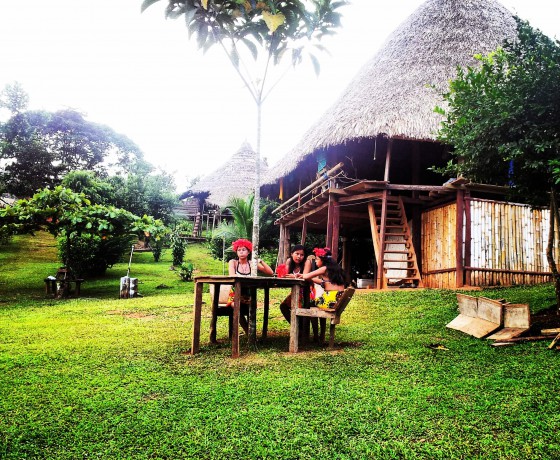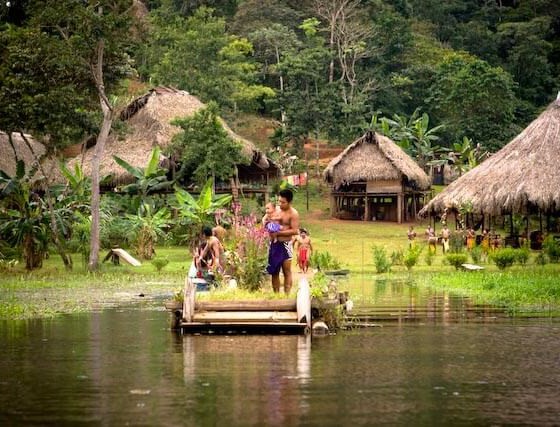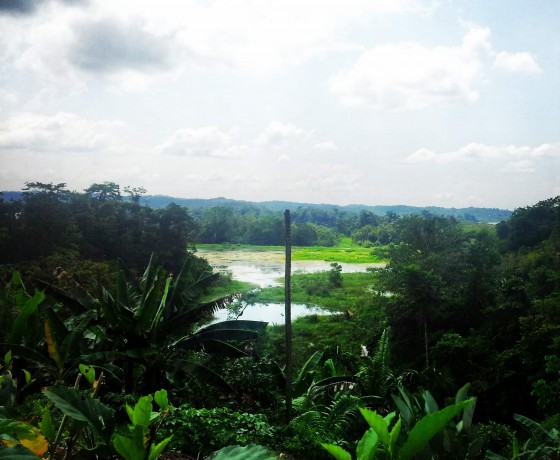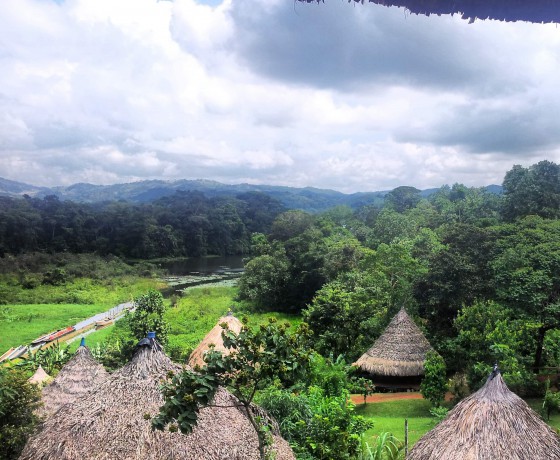FAQs
Frequently Asked Questions
Panama is among the safest countries for tourism and business travel in the region. Purse snatchings, pick-pocketing, and other types of vandalism common in other places are uncommon here. Violent crime is very rare.
That said, you should exercise caution and common sense. If you feel like you shouldn’t be wandering in a particular area, pay attention to that intuition. Avoid displaying large sums of wealth. In Panama City, take only authorized taxis (they are painted yellow and have an official number on them) or use Uber. If there’s two people in the front seat of a taxi, especially late at night, wait for another.
Some areas to be wary of include city of Colon and Panama’s border with Colombia. If you visit the Colon area, go with a tour company and stick to the free-trade zone.
You can travel to Panama throughout the year, but you will want to think about what you want to do before deciding when to come.
During the rainy season, which is also low season, there is typically a tropical storm in the late afternoon which will break up your day. The upside is that prices and availability are better. Steer clear of the wettest months: October and November.
No. Most Panamanians are bilingual in English and Spanish, especially those that cater to visitors.
If you are coming from anywhere in the Americas or the European Union, you most likely will not need a visa, but you will need a passport that is valid for at least 6 months to land tourist visa which will last you between 30 and 90 days.
Be sure to consult your embassy or a Panamanian consulate about visa requirements.
What other laws should I be aware of before visiting?
Panamanian law mandates that visitors entering Panama by air, water, or land, to have the following:
A passport that is valid for at least six months.
Proof that you have a minimum of $500.00. Cash, a credit card with a bank statement confirming access to $500 or even travelers checks will be sufficient. Authorities rarely asked for this, but it’s good to have just in case.
A ticket to exit the country within 90 days
Like other countries, Panamanian law requires you carry some kind of ID at all times. To avoid losing your passport, carry a photocopy of your passport’s photo page and the page where you entry date is stamped.
If children are traveling with only one parent, Panama requires a notarized letter of permission from the other parent.
By air: most visitors come to that country via Tocumen International Airport. If you are coming from Costa Rica or Colombia, flights cost about $400 round trip.
By land: You can also come by bus via Costa Rica to visit Bocas del Toro and the Chiriqui Highlands. Although it is a tedious 12 hour ride from San Jose, it’s cheaper than flying. The Pan American highway connects Panama with its northern neighbors. While it’s safe, it would be best to speak some Spanish.
By water: Tourists who pass through Panama on a cruise ship will need permits to disembark. Your ship will provide this permit.
Tocumen International Airport is 30-60 minutes by beltway to downtown Panama City (depending on traffic). Official taxis and vans are available where you exit the airport. Their prices range from $20 – $40.
Locals do take a bus from the airport to downtown, but you will need a “Metro” card to do the same and sadly these are not sold at the airport. If want to try your Spanish and your luck, you can ask a local to swipe their card for you in exchange for the $1.25 it costs (or offer them a bit more to sweeten the deal).
Hire a Private Taxi to get around Panama City: If your Spanish isn’t great or you just want to relax and leave everything in friendly hands, we recommend you contact Judy of Easy Travel Panama who specializes in “personalized” ground transportation and sight-seeing service by private taxi. From the minute you touch Panamanian soil, you will have a knowledgeable and English-speaking driver/guide at the Tocumen International airport to receive and assist you. Their rates are very reasonable- for example $30 an hour for your private taxi with an English speaking, knowledgeable guide. An airport pick-up is $40. Easy Travel offers transportation throughout Panama City and other nearby popular destinations.
Contact Judy at
Email: easytravel@cwpanama.net
Tel: (507) 6617-4122


While Panama is an affordable destination, it does not thrive on bargain-basement mass beach vacation offerings like Cancun. With consistent economic growth, prices in the city have become steeper in the capital, but there are still plenty of places to stay and eat for any budget in and outside of Panama City.
With the exception of Bocas del Toro, you can drink the tap water all along the country.
While visiting with up-to-date standard vaccinations is most-likely fine, the United States’ Center for Disease Control recommends getting the Hepatitis A and the Typhoid vaccine. If you are really going to be going deep into the wild, consider getting Hepatitis B, Yellow Fever, Rabies and Malaria vaccines as well.
Panama has two climates: the lowland which is tropical and humid and the highland which has year-round spring temperatures.
In the lowlands, temperatures range between low 70 and high 90°F (23°-30° C). Days are wildly bright and evenings are deliciously balmy. In the highlands, temperatures move between 60 and 80 F (15°-25° C). The ocean is a welcoming ~80°F (29°C) along both coasts all year-around.
There’s two seasons: the dry and the rainy. The dry season runs from January through April and rainy season from May through December. During the latter, there is normally a shower in the afternoon, leaving mornings and nights open for unbothered adventure. The seasons often blend into each other and each region has its own microclimate and peculiarities. For example, in Bocas, it can occasionally rain all day.
Panama’s domestic airport, Marcos A. Gelabert, is in Albrook, is about 15 minutes from downtown Panama City and 45 minutes from Panama’s Tocumen International Airport.
Copa has flights from Tocumen Airport to David, which is an hour’s car ride away from Boquete, Chriquí. There are also flights from Marcos A. Gelabert to David and also to Isla Colón which is where you will land by air in Bocas del Toro, as well as many other popular destinations. Domestic round trip fares range between $100 and $300.
Panama City-Pacific Coast Beaches: 1 ½ -2 hours by bus or car.
Panama City-Gamboa Rainforest Resort or Canopy Tower: 45 minutes by car.
Panama City-Panama Canal Miraflores Lock and Visitor Center: 20 minutes by car.
Panama City-Contadora Island: 15 minutes by plane.
Panama City-San Blas Islands: 30 minutes by plane.
Panama City-Isla Grande: 2 hours by car, longer by bus.
Panama City-Bocas del Toro: 1 hour by plane.
Panama City-Boquete: 1 hour flight to David, then a 45 minute drive by car.
Panama City-Anton Valley (El Valle): 2 hours by bus or car.
Panama City-Pedasí: 4.5 hours by car, 6 hours by bus.
Panamanians have an innate sense of beauty that shows in their handicrafts. Beyond the Panama hats, you will find palm-leaf woven baskets colored with natural dyes, tropical wood and tagua nut or vegetable ivory carvings, pre-Columbian and Spanish colonial style jewelry and “molas” which are intricate hand-sewn tapestries of the Guna indians which are made into everything from hand-mittens to pillows and jackets.
The best place to buy high-end souvenirs and jewelry is Reprosa which has stores in Casco Viejo, downtown Panama City, and Costa del Este. For a wide-variety of playful designs sold by the artisans themselves, visit Paseo Las Bovedas in Casco Viejo which has spread of craftsmen hawking their fare. Throughout Casco you will find a number of other souvenir shops.
Panama’s position as a narrow land bridge connecting two continents has endowed it with some of the world’s most pristine and biodiverse rainforests. National parks cover five million acres. One key indicator of its biodiversity: Panama, which is roughly the size of North Carolina, close to 1000 recorded bird species. That is more than the US and Canada combined.
One American travel writer told us that she saw more nature in one afternoon in Soberanía National Park, located just 45 minutes from downtown Panama City, than she saw in two weeks in Brazil’s Amazon.
To see multiple species of monkey, sloths, birds, alligators and other animal life, take the Monkey Island Tour of the Panama Canal with Jungle Land Explorers Ancon Expeditions.
Panama has been the home of the Smithsonian Tropical Research Institute (STRI) for almost a century. Thanks to the presence of this world-renown scientific research institute, Panama’s flora and fauna that has been as faithfully studied, cataloged, and preserved.
Panama has…
- The most accessible exotic nature in the world – the “hyper-diverse” Panama Canal Rainforest is 30 minutes from Panama City.
- Beautiful beaches along 1000 miles on coast on both oceans and on fifteen hundred islands with hardly a soul in sight.
- Seven living indigenous cultures with their own way of life and traditions.
- Forty-eight fascinating historical monuments.
- 954 bird species in vast National Parks
- A fun, sophisticated and safe capital city.
- An exciting night life with casinos, discotheques and excellent restaurants.
There are a number of national parks close to the city you can see critters in: Metropolitan Soberanía, Barro Colorado Island, Monkey Island, Pipeline Road, Plantation Road, and Achiote Road. Take a guide or go with a tour operator to really take advantage of these rich deposits of flora and fauna.
Outside of Panama City, the most well-known are La Amistad and Volcán Barú in Chiriqui (on the border with Costa Rica), Isla Bastimentos in Bocas del Toro, the Coiba and the Pearl Islands on the Pacific side, and Darien National Park, which has had a Unesco World Heritage status since 1981 and is the country’s largest and most checkered protected area.
National Parks are not developed as they are in the States or Costa Rica for that matter: most trails are not maintained so you will need to hire a guide to find your way across them.
Hotels and ecolodges near National Parks include Gamboa Rainforest Resort and Canopy Tower (Panama Canal Rainforest/Soberania National Park, Hacienda del Mar (Pearl Islands), Punta Caracol and Al Natural (Bocas del Toro), Los Quetzales and Finca Lerida in Chiriquí’s Amistad National Park.
See wildlife without breaking a sweat over lunch at Los Lagartos Restaurant which overlooks the historic Chagres River at the Gamboa Rainforest Resort, just 45 minutes from Panama City. From the restaurant terrace you’ll see a trove of tropical wildlife including alligators, turtles, fish, birds in the river and even an occasional mammal on shore.
The voltage is the same as the United States and Canada: 110V.
Many doctors are trained in the US or Canada and the standards at top hospitals compare favorably with those in other developed nations. Punta Pacifica, Punta Paitilla, San Fernando and Hospital Nacional in Panama City are all excellent hospitals with bilingual doctors. Hospital Nacional in Panama City offers inexpensive care and has a special department for tourists as well as multilingual staff. They accept most insurance policies.
Outside the city, medical facilities vary in quality so be sure to purchase travelers insurance ahead of time.
There are no required vaccines or shots, however United States’ Center for Disease Control recommends getting the Hepatitis A and the Typhoid vaccine. If you are really going to be going deep into the wild, consider getting Hepatitis B, Yellow Fever, Rabies and Malaria as well.
Mosquito control keeps these nuisances sparse in the city, but if you are hiking in the rainforest or jungle, be sure to generously apply insect repellent.
Unless you are an internationally experienced driver with a high-tolerance for aggression, we don’t recommend driving in Panama City. In short, it’s chaotic, confusing, and features exhausting traffic jams during commuting jobs. Taxis are plentiful, safe, and inexpensive and Uber is available throughout Panama City. Make sure to take only official taxis which are yellow and have a number on them. You can also hire personal driver or explore the Metro.
Once you are outside Panama City, renting a car makes sense. The Panamerican Highway, the main highway across Panama is in excellent condition and 75% of it is a modern new four lane highway. Feeder roads off this main highway to major destinations are also reliable and lined with gas stations and restaurants (with the exception of the road to San Blas). As with driving in any unfamiliar country, we strongly advise you plan to drive during the day as much as possible.
10% is normal. Some tips are included in the bill, so be sure check. While you don’t have to tip taxi drivers, gratuity is greatly appreciated: that extra dollar or two means a lot to a Panamanian family (minimum wage is $700 a month).
Panama is on EST from October to April and CST from April to October when daylight savings goes into effect in the States.
Panama has…
- The most accessible exotic nature in the world – the “hyper-diverse” Panama Canal Rainforest is 30 minutes from Panama City.
- Beautiful beaches along 1000 miles on coast on both oceans and on fifteen hundred islands with hardly a soul in sight.
- Seven living indigenous cultures with their own way of life and traditions.
- Forty-eight fascinating historical monuments.
- 954 bird species in vast National Parks
- A fun, sophisticated and safe capital city.
- An exciting night life with casinos, discotheques and excellent restaurants.


Panama is a primarily service-based economy. Services include the Panama Canal, logistical services, tourism, the largest free trade zone in the Americas and an international banking center with over 100 banks. Panama City is becoming a business hub of the Americas and a preferred place for regional meetings.
Because of the quality of life and safety many international companies are making their Latin American corporate headquarters in Panama. Panama offers tax incentives and special economic zones for businesses and corporate headquarters.
Bananas, shrimp and coffee are the major agricultural exports.
Panama has one of the most stable democracies in the Americas. Since 1989, when the dictator Noriega was deposed, Panama has been a fully democratic country.
Panama’s current president is Juan Varela whose 5 year term began in 2014. He’a a populist but business friendly and effectively working on reducing corruption.
No. Panama is the literally the end of the road. No roads cut through the dense jungle of Panama’s Darien province to South America. Nor are there any official ferries or boat service. You can take a boat from the Colon side of Panama. Check on some backpacker blogs for info. Otherwise, the only way to go is to South America is to fly. If you have a car, you can arrange to ship it by boat.
Panamanians are some of the most pro-American peoples anywhere. They’ew proud to finally have complete sovereignty over their country with the transfer of the Panama Canal, but are delighted to see Americans back as tourists and investors. Due to their long historical association with the United States, Panamanians understand and appreciate Americans as few other countries do.
A local joke is that Panama is just like Miami except that Panama is safer than Miami, more people speak English, there are no hurricanes and Americans are more popular. It’s true.
Panama is fast becoming the business hub of the Americas. It has Latin America’s second freest market economy, a first-world communications and road infrastructure, the dollar as its currency, a major international banking center, the largest Free Zone in the Americas and an unmatched geographic position with multiple logistic transportation centers. It’s international airport has direct flights to 120 international cities. There are laws granting major tax and hiring incentives for corporate headquarters. There’s a special economic zone where a new city is being built- Panama Pacifico, with tax incentives for businesses and fast track government permits. Caterpillar, Dell and 3M and dozens of others are already there. Panama City in one of Latin Americas safest and most sophisticated capitals with a variety of neighborhoods attractive to foreigners.
Panama’s entrepreneurial class most of whom were educated in the States or worked for Americans in the former Canal Zone.
Dealing with government permits etc. can be frustrating. , but little by little things are getting streamlined.
Yes. As acknowledged article in the Wall Street Journal, and the Smithsonian Magazine, Panama runs the Canal as well, if not better than the Americans.
Under Panamanian control, for the first time the Canal is run on a for-profit basis. Profits go to Panama’s treasury. Technological developments are also dramatically increasing efficiency.
If you have a smartphone, the cheapest way to make phone calls is over wifi.
If you want to receive phone calls without being on wifi or using an international plan, you can buy a cheap cell phone & SIM card at an electronics store and then acquire a pre-paid phone card at major grocery store like El Rey or Farmacia Arrocha. If you want to use a chip with your own phone, it will need to be unlocked.

